Accused: Ohio man once considered exonerated by DNA evidence still fights to clear name
When former Akron Police Capt. Douglas Prade was convicted of killing his ex-wife in 1997, he vowed he would one day clear his name.
And it seemed he had – briefly – when DNA testing in 2013 suggested he was not the man who’d bitten his wife, Dr. Margo Prade, in the arm as she struggled with the shooter who took her life. Based on those test results, Summit County Judge Judy Hunter overturned Prade’s conviction and set him free.
But in July 2014, after 18 months of freedom, Prade was re-imprisoned after a different judge, Christine Croce, decided DNA testing wasn’t sufficient to overturn his conviction after all. Much of Margo Prade’s family applauded the decision, with the noteworthy exception of the Prades' daughters, Kenya and Sahara.
1997 through 2019: A timeline in the case against former Akron Police Capt. Douglas Prade
“Ultimately, I knew that he didn’t do what they said he did,” Sahara Prade told The Enquirer in a recent interview.
Over the last decade, Prade has been in a unique position: As the only Ohio inmate once freed by DNA testing, he has continued his fight to try to prove his innocence a second time. He has allies in his corner, including University of Cincinnati Law's Ohio Innocence Project, but they’ve all run out of avenues to help him.
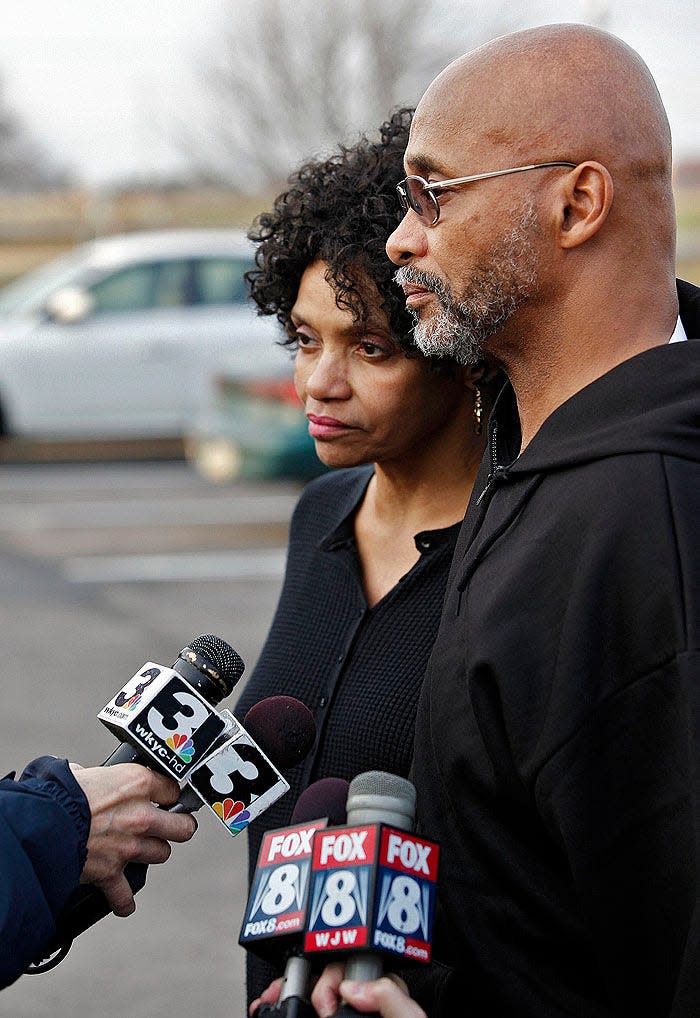
“The prosecutor has painted this picture of me,” Prade told The Enquirer in a series of telephone interviews from the Toledo Correctional Institution beginning in early 2022.
“They have demonized and villainized me over the years. People have become comfortable with the notion that I’m guilty of Margo’s murder,” he said. “So the problem that I have is that first I have to personally disabuse people of the notion of my guilt before I can get them to actually investigate her murder.”
James Pollack, spokesman for Summit County Prosecutor Elliot Kolkovich, said Prade's conviction hinged on more than a single piece of evidence. Circumstantial evidence outside of the DNA-linked bite injury also pointed to Prade being the killer, he said.
"Nothing has changed in the past 10 years," Pollack said.
For those who believe Prade is guilty, there’s no need to take another look at his conviction. He’d been condemned by a jury of his peers who’d heard testimony from Prade’s own colleagues with the Akron Police Department.
To them, Douglas Prade’s guilt is a settled matter, and his stint out of prison nothing more than a glitch.
Cameras caught killing on tape
It’s a complicated case, one that will go down in the annals of Ohio criminal justice. It's also an emotional one that many in Akron are reticent to revisit, said Lacy Washington, a former Akron Police detective who's turned private investigator since his 2001 retirement.
"People don't like to talk about it because it's been so long and people love Margo so much," Washington said. "I know people who won't even go past the original scene because they get physically sick."
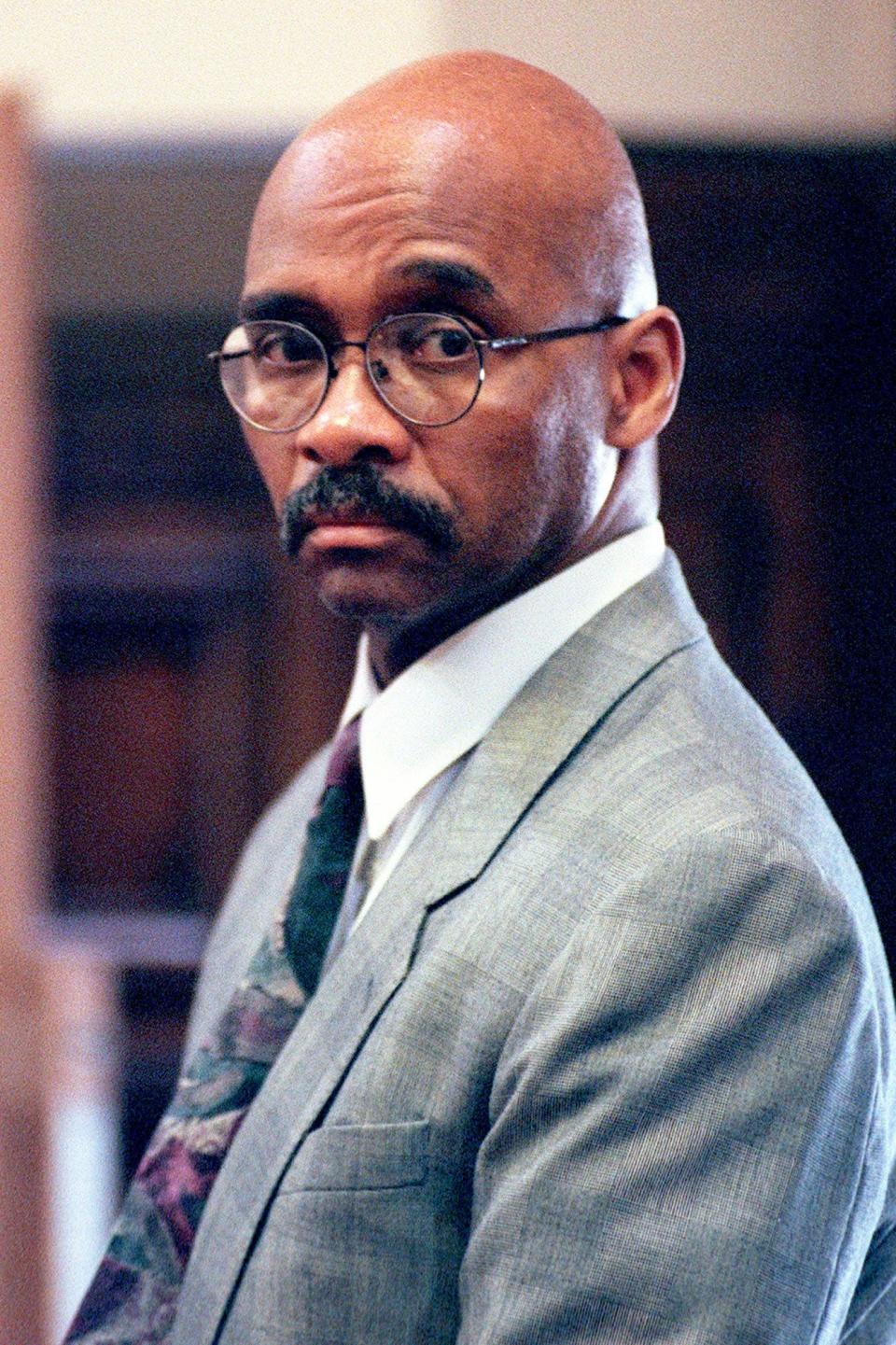
Here’s how the case unfolded:
On Nov. 26, 1997, the day before Thanksgiving, Margo Prade called her staff at the medical office she ran on Wooster Avenue in Akron to let them know she was just minutes away.
“So we waited and we waited on Dr. Prade,” Lori Collins, a medical assistant who’d been hired seven months earlier, said during trial testimony in 1998.
Patient appointments had been set to begin at 9 a.m. When Prade wasn’t there after 10 a.m., Collins grew restless, anxious about all the waiting patients. She went outside to smoke a cigarette and grab a soda from her car.
That’s when she noticed the doctor’s green Dodge Caravan in the parking lot near the fence line. Collins approached and saw Prade slumped to the right, her body draped across the passenger seat. Collins dropped her cigarette and ran for help, after which the minivan was surrounded by nurses and bystanders trying to help to no avail.
Surveillance cameras captured the shooting, but the footage is largely useless, said Brian Howe, a lawyer with the Ohio Innocence Project who's been researching the case since 2014. That's because the images captured appear simply as "extremely pixelated blobs."
One blob represents Margo's minivan, while another represents her killer's vehicle. The latter had arrived first and "had been sitting there, waiting," Howe said. Once Margo's van arrived, a form exited the waiting blob, climbed into the front passenger seat of the blob representing Margo's van and exited again within minutes.
All the footage confirms is that the attack on Prade occurred soon after 9 a.m.
Autopsy showed doctor shot 6 times
It was immediately clear Prade had been fatally shot, but it would take an autopsy to determine the shooter had unloaded six bullets into her 41-year-old body. By the state of her minivan, it was evident she’d fought with her attacker, who’d torn a bracelet off her wrist and bitten her through her doctor’s coat and blouse, leaving a curved bruise on her upper left arm.
During Douglas Prade’s trial, dental consultant Thomas Marshall testified for the prosecution that he compared the bite mark to impressions of Prade’s teeth and found them to be a perfect match. He was bold in his assertion, saying that no one in the world outside of Prade could have made the bite mark.
That testimony was false. Bite marks left on human skin can’t be identified with such a degree of certainty, and the bruise on Margo Prade was especially tough to analyze as it had been made through two layers of clothing.
Another expert, Lowell Levine – who'd gained national fame when his testimony against Ted Bundy helped land the serial killer in the electric chair – was more conservative about the provenance of the bite mark, saying only that Douglas Prade couldn't be excluded as the biter.
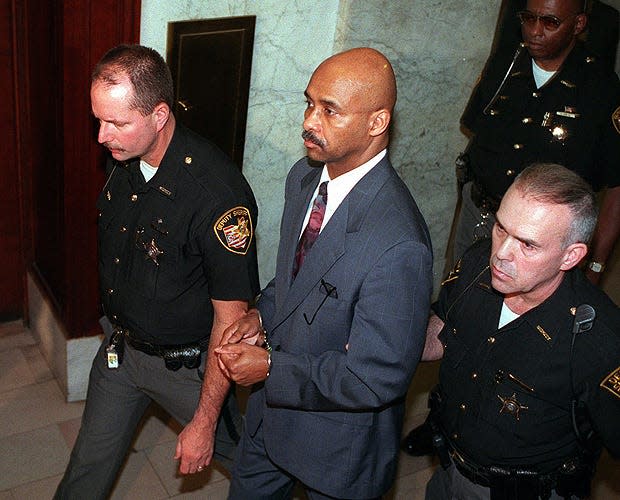
Prosecutors were so certain, though, that Prade was his ex-wife’s killer that they lamented at the time they couldn’t conduct DNA testing on a biological sample believed to be saliva collected from Margo Prade’s lab coat. Testing back then required a larger sample size. Prosecutors assured the jury: If such testing had been available, it would prove conclusively that Prade had bitten his wife, which in turn would prove he was the gunman.
But that wasn’t true. DNA testing advanced to handle smaller sample sizes, and, in 2012, with the help of the Ohio Innocence Project, Prade lobbied to have that purported saliva tested. The results showed the biological matter came from someone else.
"There were two partial Y profiles there," Howe said, explaining that meant two different men left DNA evidence on Margo Prade's coat, and neither of those men were her ex-husband.
Prosecutors argued the matter tested might not have been saliva from the bite but rather contamination of the exact spot that corresponded with the bite beneath the coat. The otherwise laundered coat had no biological matter on it elsewhere for testing.
"To me, it seems really implausible that you would have no killer DNA on the jacket," Howe said.
Judge Hunter agreed, overturning Prade's conviction in a ruling that prosecutors appealed and was overturned the next year by the 9th District Court of Appeals. After the reversal, Judge Croce could have ordered a new trial but instead reinstated the original conviction, leading to Prade's re-imprisonment after 18 months of freedom.
Friends testify doctor feared ex
The case wound its way up to the U.S. Supreme Court, which in 2019 declined to hear it, letting Croce’s decision stand. Croce had decided there was enough circumstantial evidence outside of the DNA to point to Prade’s guilt.
Among that evidence: Some of Margo Prade’s family and friends testified that she had told them she feared her ex-husband. He could get violent in arguments, according to her mother, the late Lillie Hendricks.
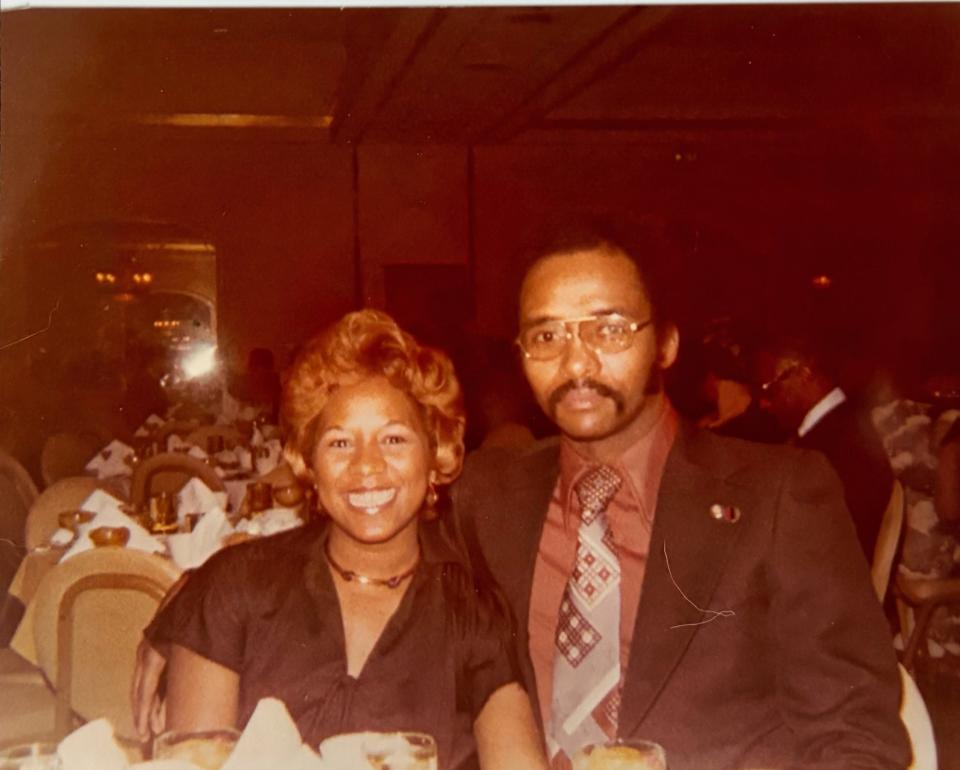
Margo Prade had first contemplated divorce in the early 1990s, according to testimony by her best friend, Brenda Weems, though tragedy affected those plans. On Feb. 17, 1993, Douglas Prade’s 21-year-old son from an earlier relationship was fatally shot.
Prade, an Akron officer at the time, happened to be working that night. He was first on the scene to discover Prescott Prade lying in a pool of blood on the ground, hit by a gunman’s stray bullet after attending a concert.
Prade said he shut down after that. “I just got to kind of moping around,” he said, describing his off hours as teeming with unnecessary household chores – cleaning the garage, washing the dog, working on the car – anything, he said, to avoid sitting still with his thoughts.
He began having an affair with a coworker, causing strife at home and gossip at work. He told the Beacon Journal in 1998 that his relationship with the other woman helped him survive the death of his son at the expense of his marriage.
It's that affair that has so many convinced Prade is guilty despite the DNA evidence, Washington said.
"Once people heard in court about his extracurriculars during his marriage, that did it," he said.
Douglas Prade kept cache of recordings
Margo Prade officially filed for divorce, but her husband was reticent. He was slow to move out of the house, instead sleeping in a separate room in the Prades’ shared home. He moved out after the divorce was finalized but still didn’t give Margo Prade the space she told friends she needed. Sometimes he would enter his old home without permission, friends would later testify.
The most disturbing – and damning – evidence presented during the murder trial was a cache of audio cassette tapes Prade had of his ex-wife talking on the phone in her house with friends that prosecutors said proved he had a deadly fixation on his former wife.
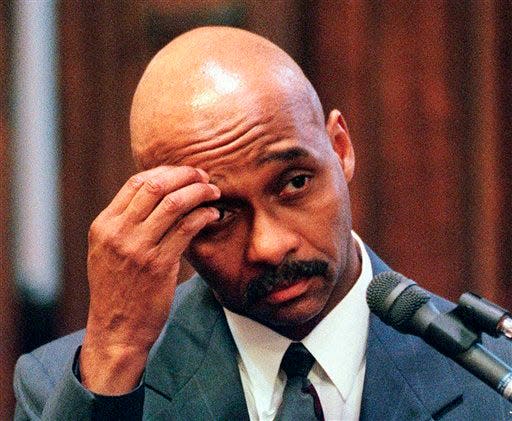
Prade told The Enquirer the recordings were much more innocent than they seemed. The device served double duty in the house, he said: Sometimes the couple would record daughter Sahara – a talented singer who today performs in Las Vegas – so she could listen back and make improvements. Other times, they connected it to the family phone like an answering machine and to record medical calls Margo Prade would get in the middle of the night.
"She'd relisten to the conversations she was having when she was half-asleep with the people in the emergency rooms at one of the three hospitals in Akron," Prade said.
The tape recorder stopped working almost a year before the doctor's murder, but the personal conversations played for jurors didn't help Douglas Prade's cause.
"They played in court where she's talking about, 'Douglas is moody' or 'he doesn't stay home' or 'he does this and that,' and when they played that in court, it becomes sort of an indictment of me and our marriage because she was complaining about me," he said.
"Once they decided they were going to convict me of her murder, they could have charged me with being the second person on the grassy knoll in Dallas and I would have been convicted of that, too."
An alibi in question
Fall of 1997 was supposed to be a new era for Margo Prade. She had been dating in the aftermath of her divorce, having relationships with fireman Al Strong and state trooper Terry Heard, but both romances fizzled. Then through a friend’s introduction, she met Columbus lawyer Timothy Holston. The two quickly fell in love and got engaged.
Prade even made an appointment with a doctor to discuss reversing her tubal ligation to increase the odds the new couple could have a baby together after they married.
The two planned to announce to the Prades’ children, Kenya and Sahara, their engagement when they gathered for Thanksgiving dinner. Margo Prade was killed the day prior.
All of the men in the doctor’s life were questioned, and a couple of her past lovers gave investigators pause, according to court documents. Some hadn’t handled the break-ups well, Weems said.
But investigators quickly zeroed in on Prade, who, they reasoned, stood to gain the most from his ex-wife’s death. With her gone, Prade would have full custody of their shared children and potential access to their inheritances until they became adults.
Never mind that he had an alibi.
Prade had been exercising at the gym in his apartment complex, testified a fellow gym-goer there who spotted him around the same time Margo Prade was killed. Prade had been hard to miss, the woman testified, because he was wearing a sweatshirt emblazoned with the words, “Kenya’s Dad” – a nod to then-12-year-old Kenya’s role on the gymnastics team.
Prade’s girlfriend, an Akron dispatcher, alerted him during his workout that police had been called to Margo Prade’s practice. By then, Prade was alone in the gym. He rushed to the scene, where he tried to push past officers to get to his ex-wife. When told she was dead, he collapsed.
Immediately, his colleagues suspected him.
The reason why varied, according to those who testified against him: Some officers described Prade's reaction to his ex-wife's death as too emotional, others, too aloof. It seemed too convenient he was wearing a shirt that so clearly identified him, so some deemed that suspicious. Another said he didn't seem sweaty enough given his statement that his workout had been interrupted.
By this point, Prade was a captain on the force, though before that recent promotion, he’d worked for years in internal affairs, meaning he was often assigned to investigate allegations of wrongdoing against other officers. Investigating one’s coworkers is a fraught assignment anywhere, but Prade had a no-nonsense, gruff manner that he knew rubbed some people the wrong way.
Meanwhile, Margo Prade's reputation was quite the opposite.
"She was so loved," Washington said. "I heard from several people that she caught diagnoses that other doctors missed just because of her demeanor."
'I'm not a crackpot'
Prade's last chance at reinstating his overturned conviction passed in 2019, when the U.S. Supreme Court refused to hear his case, allowing Croce's reinstatement of his original conviction to stand.
Since then, Prade has been on a letter-writing campaign, asking myriad politicians, journalists and activists to re-examine the evidence. He's grateful for his 18 months of freedom, especially because it allowed him to spend time with his daughters. Kenya died of cancer in 2019.
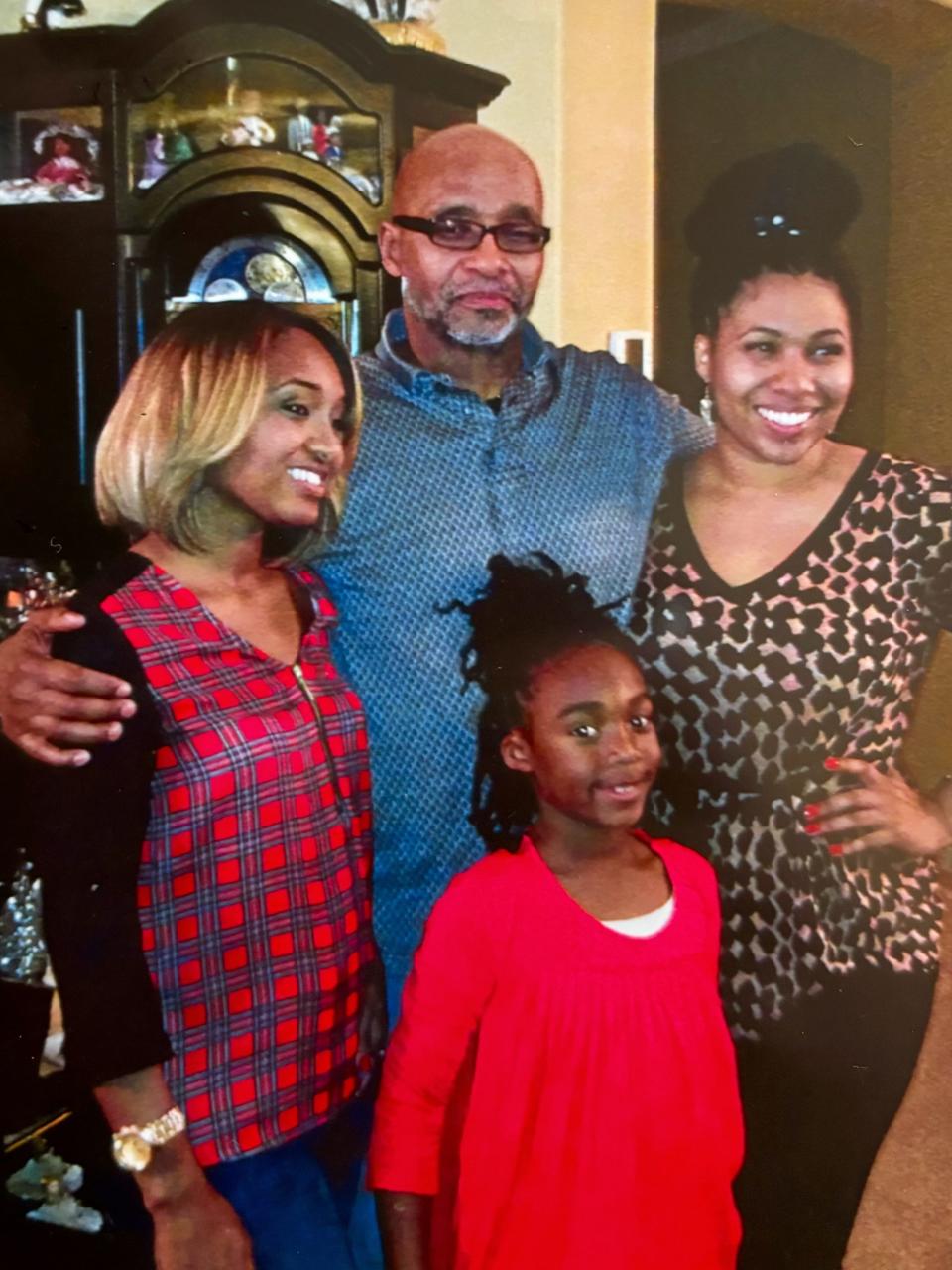
In his letters, he pleads with investigators to come talk to him about unsolved murders in Akron, including Margo Prade's.
"I'm not a crackpot and I haven't 'flipped out,'" he wrote in one. In another, he said he believes whoever killed his ex-wife might have killed three other women, too.
"Even though the DNA found in this case is not mine, the prosecutor has made no attempt to find out whose DNA was found," he wrote in a third.
He rarely gets a response, despite the ongoing support from Howe and the Ohio Innocence Project.
"There is no litigation pending in front of any court on this case," said Howe, who noted that Prade's next best hope at release is a parole hearing in June 2025.
"There is, I believe, an innocent person in prison right now for a murder he did not commit," Howe said. "He was out for a short period of time and went back in, and he doesn't have forever to get the truth out."
This article originally appeared on Cincinnati Enquirer: Ohio man once exonerated by DNA continues fight to clear name

